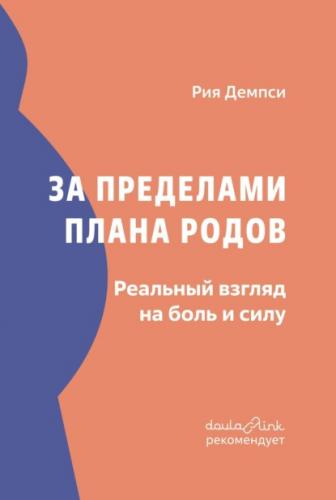48
Oladapo, O. T., Souza, J. P., Bohren, M. A., Tunfalp, O., Vogel, J. P., Fawole, B., Mugerwa, K., Giilmezoglu, A. M. (2015) ‘WHO Better Outcomes in Labour Diffi culty (BOLD) project: Innovating to improve quality of care around the time of childbirth.’ Reproductive Health. BioMedical Central.
49
ACOG: American College of Obstetricians and Gynaecologists (2019) Approaches to Limit Intervention During Labour and Birth, acog.org.
50
ACOG: American College of Obstetricians and Gynaecologists (2019) Approaches to Limit Intervention During Labour and Birth, acog.org.
51
Begley, C. (2012) The OptiBirth project. Optibirth. edu.
52
NICE Antenatal care for uncomplicated pregnancies Clinical guideline, (2019) National Institute for Health and Care Excellence.
53
Miller, S., Abalos, E., Chamillard, M., Ciappani, A., Colaci, D., Comande, D., et al. (2016) ’Beyond too little, too late and too much, too soon: A pathway towards evidence-based respectful maternity care worldwide ‘ (2019) Lancet.
54
Miller, S., Abalos, E., Chamillard, M., Ciappani, A., Colaci, D., Comande D et al, (2016) ‘Beyond too little, too late and too much, too soon: A pathway towards evidence-based respectful maternity care worldwide.’ (2019) Lancet.
55
Spong, Berghella, V., Wenstrom, K., Mercer, B., Saade, G. (2012) Preventing the hist cesarean delivery: summary of a joint Eunice Kennedy Shriver National Institute of Child Health and Human Development, Society for Maternal-Fetal Medicine, and ACOG workshop. ’Journal of Obstetrics & Gynecology. Vol. 120, 5.
56
Sandall, J., Tribe, R., Avery, L., Mola, G., Visser, G., Homer, C. et al (2018) Short-term and long-term effects of caesarean section on the health of women and children.’ Lancet. Vol. 392. Issue 10155.
57
National Vital Statistics Reports. Vol. 67, № Births: Final Data for Martin, J. A., Hamilton, B. E., Osterman, M. J. K., Driscoll, A. K., Drake, P. Division of Vital Statistics.
58
Shah, N. (2019) Institute for Healthcare Improvement. IHI. org.
59
Simkin, P., Ancheta, R. (2011) The Labor Progress Handbook. Wiley-Blackwell.
60
Simkin, P., Ancheta, R. (2011) The Labor Progress Handbook. Wiley-Blackwell.
61
Newnham, E., McKellar, L., Pincombe, J. (2018) the Humanisation of Birth: A study of epidural analgesia and hospital birth culture. Springer International Publishing.
62
Leap, N., Walsh, D. in Newnham, E., McKellar, L., Pincombe, J. (2018) Towards the Humanisation of Birth: A study of epidural analgesia and hospital birth culture. Springer International Publishing, (p. v).
63
Deelereq et al. (2013) Birth by the numbers. Birthbythenumbers.org.
64
Newnham, E., McKellar, L., Pincombe. (2018) Towards the Humanisation of Birth: A study of epidural analgesia and hospital birth culture. Springer International Publishing.
65
Conaboy, C. (2018) ‘Motherhood brings the most dramatic brain changes of a woman’s life: So why does prenatal care ignore the topic altogether?’ Globe Magazine.
66
Buckley, S. (2015) ‘Hormonal Physiology of Childbearing.’ Hormonal Physiology of Childbearing: Evidence and implications for women, babies, and maternity care. Washington, DC.: Childbirth Connection. Programs, National Partnership for Women Families, (p. 14).
67
Newnham, E., McKellar, L., Pincombe, J. (2018) Towards the Humanisation of Birth: A study of epidural analgesia and hospital birth culture. Springer International Publishing.
68
Serrallach, О. (2018) The Postnatal Depletion Cure. Hachette Australia.
69
Klaus, M. Kennell, J., Klaus, P. (2002) The Book. Perseus Publishing.
70
Klaus, M., Kennell, J., Klaus, P. (2002) Doula Book. Perseus Publishing.
71
Newnham, E., McKellar, L., Pincombe, J. (2018) The Humanisation of Birth: A study of epidural analgesia and hospital birth culture. Springer International Publishing.
72
Reed, R. (2018) Why Induction Matters. Pinter 8c Martin, (p. 120).
73
Kroll-Desrosiers, A., Nephew, B., Babb, J., Guilarte-Walker, Y. et al (2017) ‘Association of peripartum synthetic oxytocin administration and depressive and anxiety disorders within the fi rst postpartum year.’ Depression and Anxiety.
74
Resources, Beyond Blue (2011). beyondblue.org.au.
75
Reed, R. (2018) Why Induction Matters. Pinter 8c Martin.
76
Dahlen, H., Downe, S., Wright, M., Kennedy, H., Taylor, J. (2016) ‘Childbirth and consequent atopic disease: emerging evidence on epigenetic effects based on the hygiene and EPIIC hypothesis.’ BMC Pregnancy and Childbirth. 16:4. BioMedical Central.
77
WHO First Embrace Initiative: thefirstembrace.org.
78
NICE Antenatal care for uncomplicated pregnancies Clinical guideline (2019) National Institute for Health and Care Excellence.
79
Newnham, E., McKellar, L., Pincombe, J. (2018) Towards the Humanisation of Birth: A study of epidural analgesia and hospital birth culture. Springer International Publishing, (p. 250).
80
Dahlen, H. (2010) ‘Undone by fear? Deluded by trust?’ № 26 Elsevier, (pp. 156–162).
81
Dahlen, H., Tracy, S., Tracy, M., Bisits, A., Brown, C., Thornton, C. (2012) ‘Rates of obstetric intervention among low-risk women giving birth in private and public hospitals in NSW: A population-based descriptive study.’ BMJ Open. BMJ.
82
Dahlen, H., Tracy, S., Tracy, M., Bisits, A., Brown, C., Thornton, C. (2012) ‘Rates of obstetric intervention among low-risk
